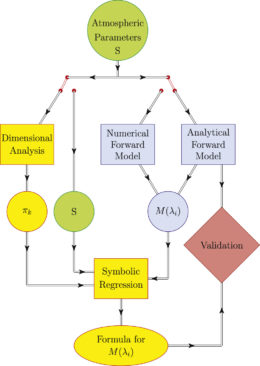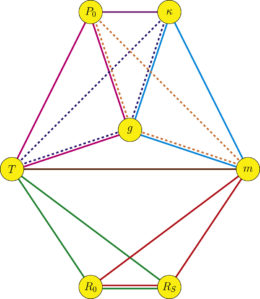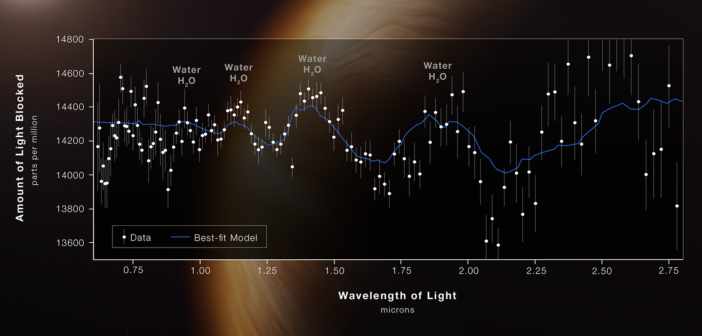This week, we got to see the spectacular first spectrum of an exoplanet’s atmosphere taken by JWST. Have you ever wondered how researchers use models to determine the properties of distant planets’ atmospheres from their spectra?
Myriad Models
Though models come in many forms, most fall into two categories: computational and analytical.
A computational model of an exoplanet’s atmosphere incorporates all our knowledge of atmospheric physics to predict what happens when photons from the planet’s host star navigate the maze of atoms and molecules in an exoplanet’s atmosphere on their way to our telescopes. Computational models generate synthetic spectra, which researchers can then compare to a planet’s actual spectrum to constrain the properties of the planet’s atmosphere, like its temperature, density, and composition.
In an analytical model, all that physics gets boiled down to a set of comparatively simple mathematical expressions that describe how the input parameters (e.g., the properties of a planet and its atmosphere) relate to the model output (i.e., a spectrum). By developing these mathematical expressions for how an exoplanet’s spectrum varies with different properties of its atmosphere, researchers can get a better sense of which physical properties affect a planet’s spectrum and why.
Analytical Avenues

A flowchart showing analytical and numerical (computational) modeling methods. The method used in this work is represented by the yellow shapes on the left-hand side. Click to enlarge. [Matchev et al. 2022]
For the specific case of exoplanet spectra, the authors first simplified their model by lowering the number of input variables. For example, instead of the planet’s radius and the host star’s radius being two separate variables, the authors use the ratio of the two radii as a single dimensionless variable.
Then, the team used machine learning to extract analytic expressions that relate their input variables to a set of synthetic hot-Jupiter spectra generated by a separate analytic model. By working with the output from another analytic model, the authors were able to gauge the success of their technique; if successful, their model should extract the exact expressions that the target model is based on. Ultimately, the authors found that their symbolic regression method was able to discard unimportant variables, generate the correct expressions, and determine which input variables have the largest impact on the output spectra.

An illustration of the degeneracies between pressure (P0), gas absorption cross section per unit mass (κ), gravity (g), temperature (T), mean molecular mass (m), planet radius (R0), and stellar radius (Rs). Two degenerate variables are connected by a line and three variables by a triangle. [Matchev et al. 2022]
Weighing the Options
Why use this technique when powerful computational models are already available? Computational models can eat up hours of computing time, and the results don’t always give physical intuition into the system being modeled. And while computational and analytical models both have an issue with degeneracy — a scenario in which multiple combinations of inputs give the same output — analytical models can help us pinpoint which variables are degenerate and develop a physical understanding of why. For example, the authors’ analytical model tells us that there is a degeneracy between the planet’s temperature and the strength of its gravitational pull. Physically, this arises because a hotter planet would have a puffier atmosphere, but so would a planet with a weaker gravitational pull.
Though analytical models may not be appropriate for all situations, they’re an important tool for studying exoplanet atmospheres — and new exoplanet spectra from JWST should provide an excellent challenge for all models!
Citation
“Analytical Modeling of Exoplanet Transit Spectroscopy with Dimensional Analysis and Symbolic Regression,” Konstantin T. Matchev et al 2022 ApJ 930 33. doi:10.3847/1538-4357/ac610c

